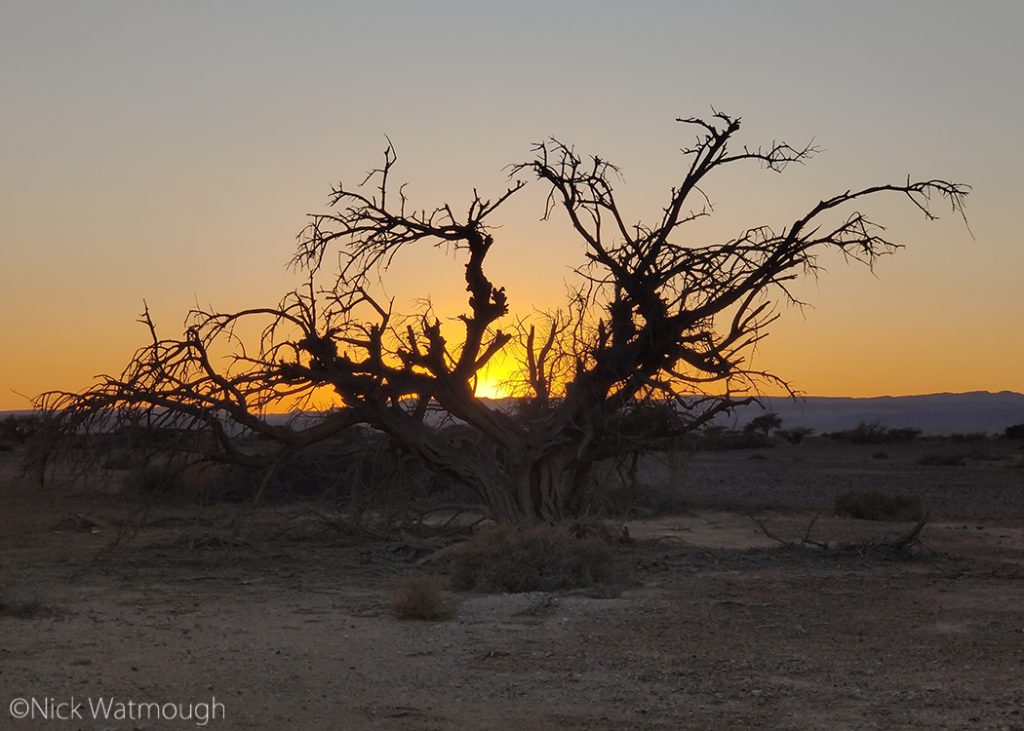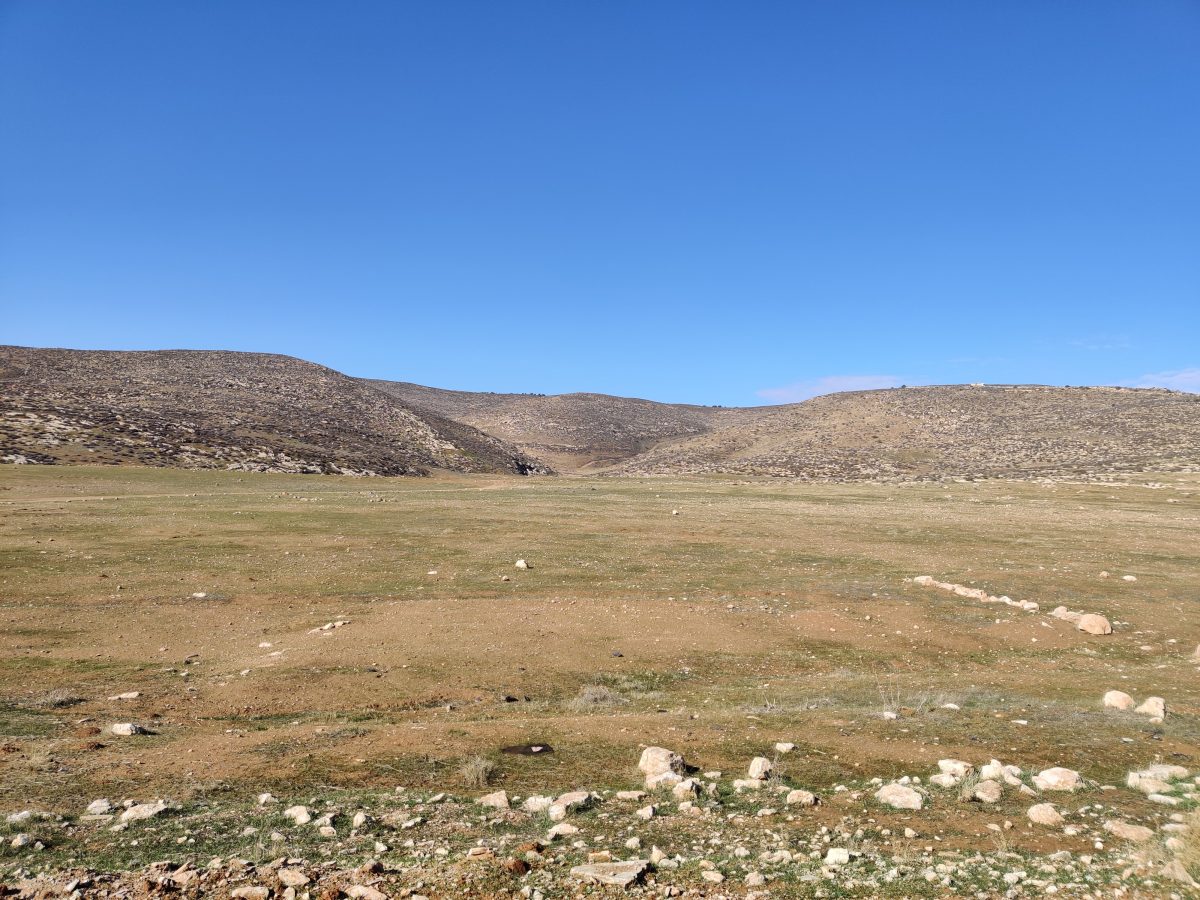The rocky slopes of Mount Amasa in central Israel typify hillsides found across much of the Mediterranean basin. The mosaic of boulders, scrub and open area is home to species such a Blue Rock Thrush, Sardinan Warbler and Woodlark. Proximity to the Judean Desert means that some desert species are also present, e.g. Mourning Wheatear and Scrub Warbler. Moreover the climate and terroir, as Ingrid and I later discovered, suits vineyards that produce very fine wine. Even more remarkable is the fact that there are wheatears all year round! I winter Finsch’s Wheatears from Turkey and the Caucasus replace the Eastern Black-eared Wheatears that breed each summer. Their Hebrew names which translate as Winter and Summer Wheatear reflect the seasonal occurance of these two species.

Mount Amasa is about the same distance from Eilat as Tel Aviv. This together with the quality birding made it a sensible place to meet Yoav Perlman. Plus Yoav wanted to see if the Persian Wheatear that had spent the last two winters here had returned. We met in the car park of Tel Arad National Park an importantant archeological site with a series of well preserved artefacts dating back to the Canaanite period (Early Bronze Age). I transferred my gear to Yoav’s car and we drove the few km up the road to the trailhead.
Winter Wheatears and a Big Surprise
Under bright blue skies we walked out across a flat grassy plain towards the foothills. The elevation and strong wind made me regret not having a coat. But conversation was a good distraction and as we gained height there was plenty to see. In particular good numbers of Finsch’s Wheatear along with Stonechats and Spectacled Warblers. Yoav’s keen ears picked out other species including Woodlark and Scrub Warbler, but nothing was coming close. And there was no sign of the Persian Wheatear on its favoured ridge. To mitigate the wind chill we took shelter in a hollow to see if the wheatears would come to us.
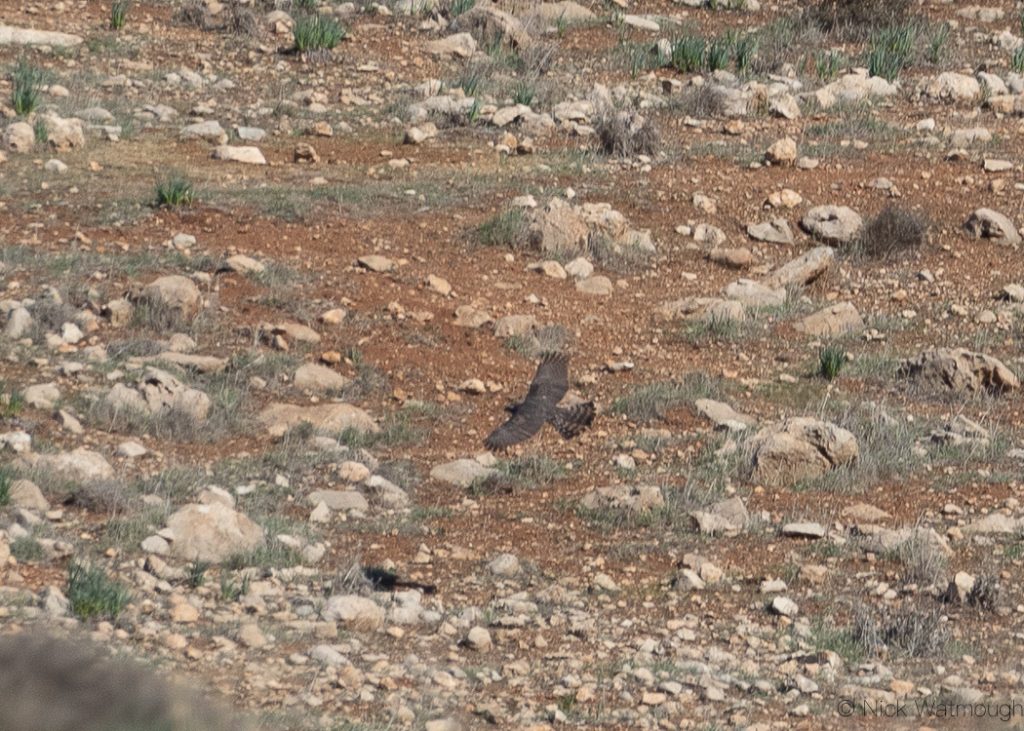
After about ten minutes with little success all hell let loose! A startled fox dashed down the path with a large raptor in hot pursuit. I tried to process what we were seeing when Yoav excitedly called it as a Goshawk. The first he had seen in Israel for ca 20 years. I was instructed to get a photo as Yoav’s camera was in his bag. The huge female did a U-turn and appeared to pitch in on the opposite hillside. We left our shelter and scrambled up the hillside, but unfortunately couldn’t relocate it. I walked down the valley to try and photograph the wheatears whilst Yoav scoured the upper slopes for the Persian but with no luck.
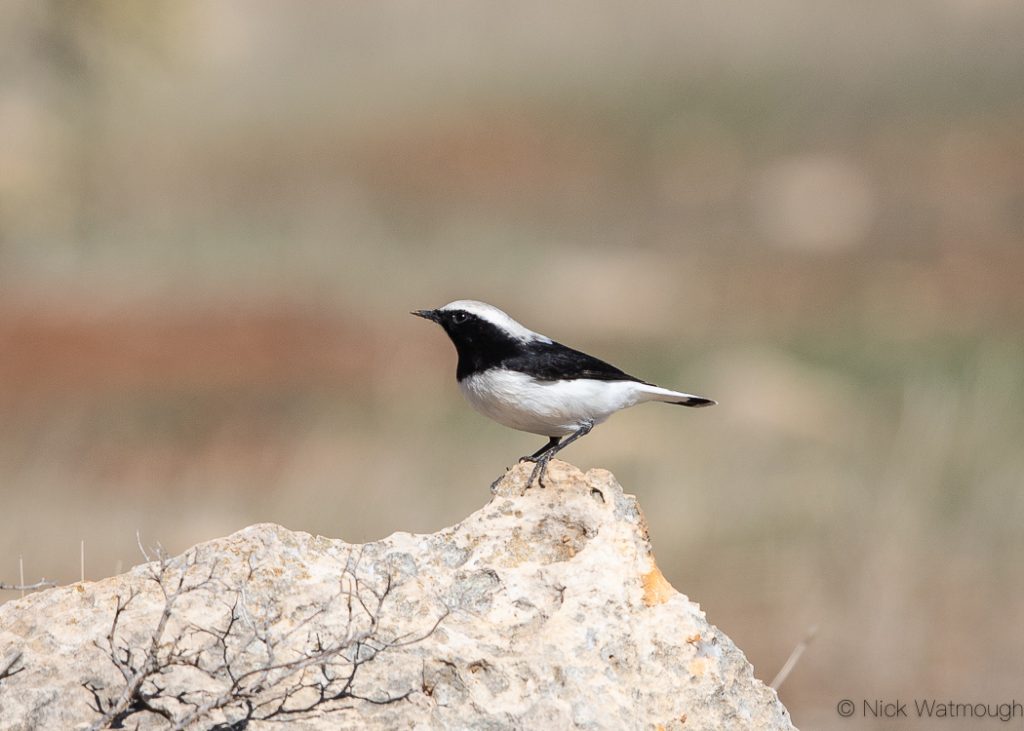
Ashalim Reservoir
We left Mount Amasa and retreived my car then visited nearby Arad for a quick coffee and sandwich. Our next destination was Ashalim Reservoir at the edge of the Dead Sea industrial zone. Patches of open water held plenty of duck, including an impressive 47 Ferruginous Duck. The extensive reedbeds were full of wintering Chiffchaffs feeding alongside the resident Clamorous Reed Warblers. Dead Sea Sparrows darted in and out of the vegetation and overhead were Marsh Harriers and a Long-legged Buzzard This very birdy area eventually produced our target species, African Swamphen.
Recently the Western Palearctic taxa in the “Purple Swamphen” complex were split into three species. Western (Purple) Swamphen (Porphyrio porphyrio) is found in the Iberian Penninsular and North Africa. In Turkey, the Caucausus and the Arabian Penninsular it is replaced by Grey-headed Swamphen (Porphyrio policephalus). The third species, African Swamphen (Porphyrio madagascariensis), recently extended its range northwards from the Nile Valley into Israel. To be honest it was not even on my radar for this trip and that made for an even more welcome WP tick (#718).
A Great Spotted Cuckoo put in a brief appearance which was a sure sign that spring had arrived in Israel. Unfortunately our time had gone very quickly and Yoav needed to back in Tel Aviv.
Hazeva
There was just over two hours of daylight left. Yoav suggested a site just off Route 90 for Arabian Warbler to visit on the way back to Eilat. This black hooded lump of Sylvia warbler starts to sing in early January and should have been easy to find. I followed Yoav’s directions to a wadi just South of Hazeva full of mature Acacias. As directed, I explored the wadi both to the North and South of the parking area but to no avail.
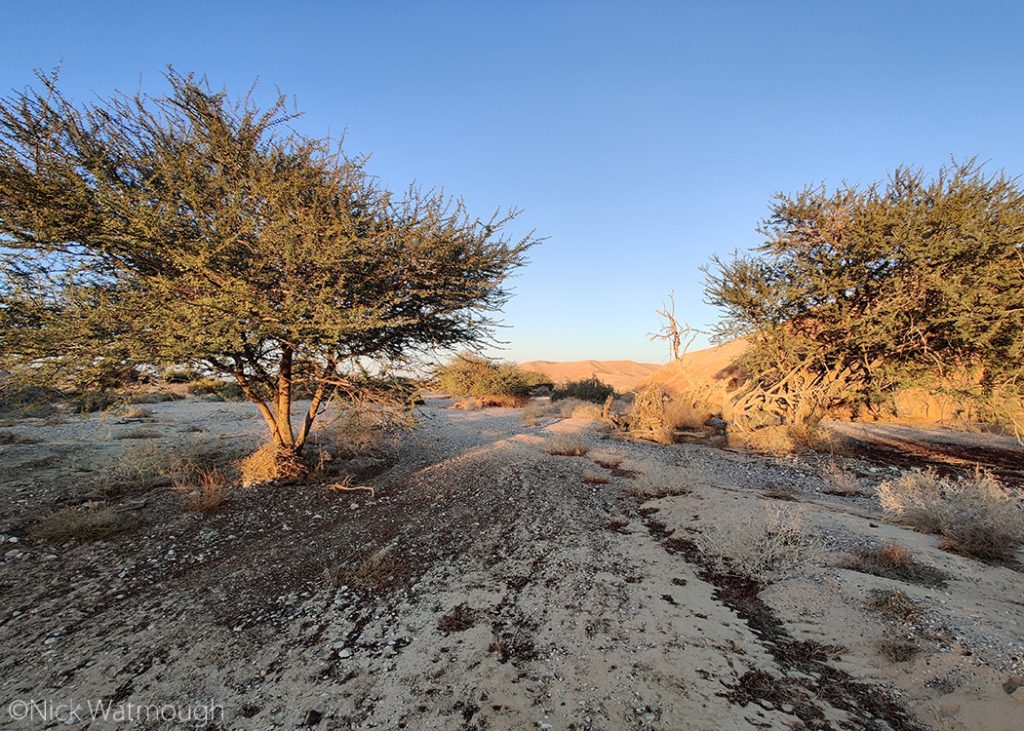
Unfortunately the only Sylvia warbler I saw in the wadi was a very photogenic Sardinian Warbler. An Arabian (Great) Grey Shrike was the only one of the trip and putting the fear of God into the local bulbuls.
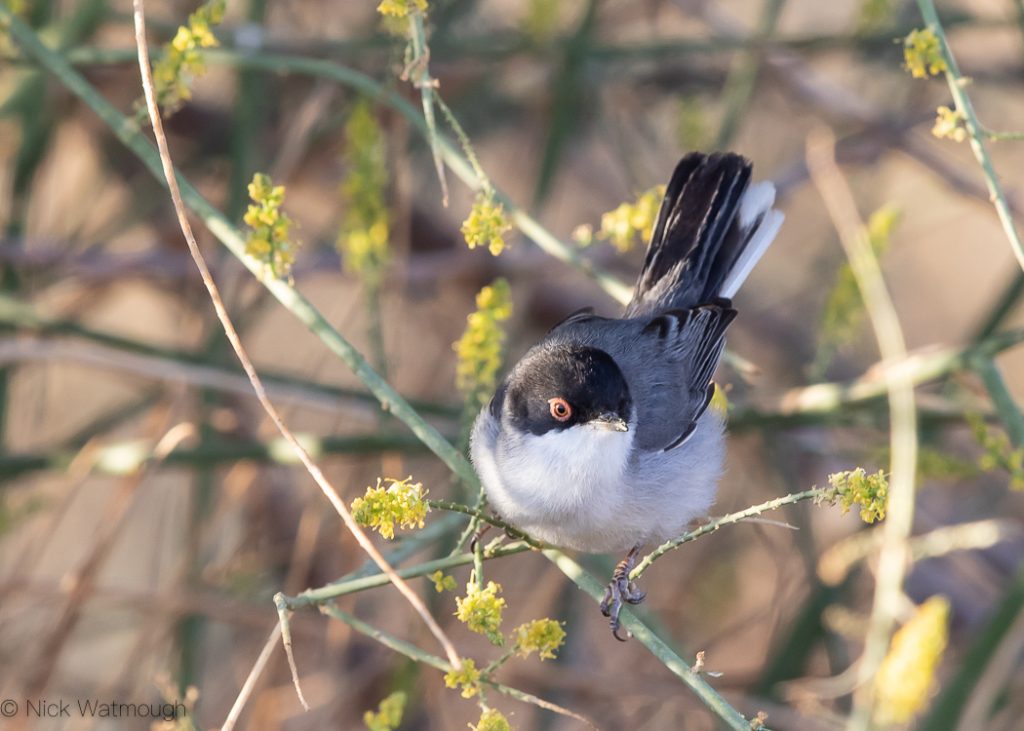
There was a gorgeous sunset to enjoy before I rejoined Route 90 and returned to Eilat to join Ingrid for dinner.
